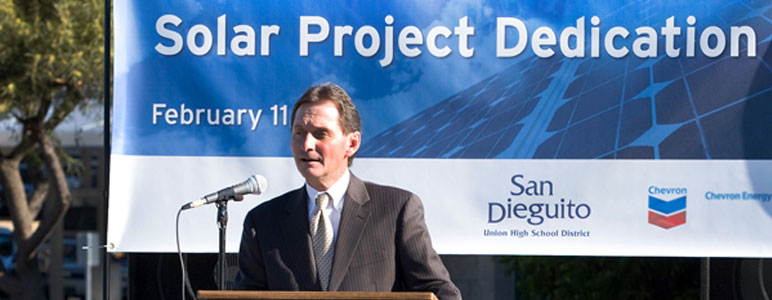


While some school districts successfully secured Proposition 39 (California Clean Energy Jobs Act) funds for sustainable energy projects during the current solicitation period, the majority of California schools are struggling to identify resources to help them through the application process. Currently, there is a lot of untapped money left, so there’s tremendous potential going forward.
Prop. 39 generates revenue from taxes levied on out-of-state corporations and will bring in about $2.5 billion earmarked for a wide range of clean energy projects in K-12 schools and community colleges through 2018. The California Energy Commission program requires school districts to come up with energy plans for improving energy efficiency or installing clean energy generation and apply for money. The projects will save schools energy and money, but equally important they will make school buildings more comfortable and safe — and produce local green jobs.
School districts have to be very targeted in their approach to obtain Prop. 39 money. What they need is to develop metrics or benchmarks that quantify energy use for each school campus and compare how much an efficient school should be using per square foot or per student. Being targeted means identifying the schools that need the most help, because this is where districts will see the highest returns on their investment.
Most bang for the buck
It’s important for schools to know where investments will get the most bang for the buck. Generally, that means bundling different projects. If there is need for an HVAC replacement that shows a 15-year payback, you can package it with a lighting project that can see payback in a year, and thus improve the return on investment with a combined HVAC and lighting project.
In our work helping school districts throughout California advance their energy goals, we’ve found that small-to-medium districts are at a disadvantage because they are unlikely to have energy expertise on facility staff like larger districts often do. With resources pushed to the limit, they focus more on plugging leaks than on long-term energy initiatives, which is why they sometimes come to CSE for help with energy efficiency and solar. Sometimes we conduct energy audits and propose upgrade projects and energy management plans. Other times, we simply help them understand the solar or energy efficiency project bids others have given them, acting as a third party offering an unbiased opinion on optimizing their resources.
Moving forward
Ultimately, we’d like more school districts and local government agencies to do long-term energy planning. As Prop. 39 funds are tapped now for projects with high rates of return, school districts should be looking at future projects potentially funded from the savings generated by Prop. 39 because those funds will run out. In the meantime, we encourage school districts to consider their energy upgrade options and move forward with energy-saving solutions and strategies.
Resources
California Dept. of Education - Prop. 39
California Energy Commission - Prop. 39

